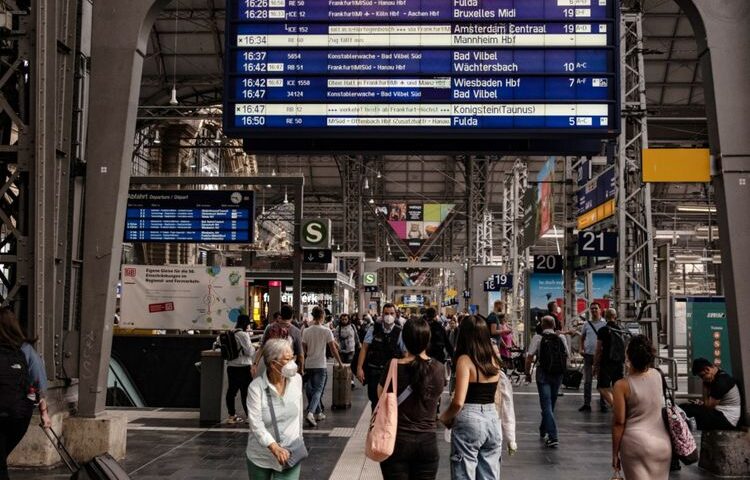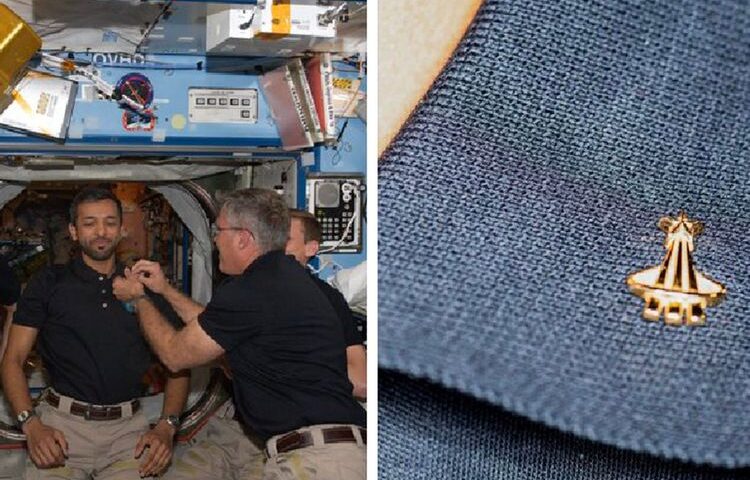CAFU’s service will allow EV owners in Quebec to charge their cars at the tap of a button, boosting access to charging infrastructure
The post UAE’s CAFU launches in Canada with EV charging solution appeared first on Gulf Business.
The post UAE’s CAFU launches in Canada with EV charging solution appeared first on Gulf Business.
Day: April 6, 2023
Saudi Arabia’s Savvy Games acquires Scopely for $4.9bn
The company will benefit from Savvy’s long-term financial backing to deliver on its strategy to grow and deepen existing franchises
The post Saudi Arabia’s Savvy Games acquires Scopely for $4.9bn appeared first on Gulf Business.
The post Saudi Arabia’s Savvy Games acquires Scopely for $4.9bn appeared first on Gulf Business.
Driverless taxis: Testing begins in Jumeirah 1, shares RTA
In February last year, RTA and Cruise joined forces to run the maiden autonomous taxi service in the city
The post Driverless taxis: Testing begins in Jumeirah 1, shares RTA appeared first on Gulf Business.
The post Driverless taxis: Testing begins in Jumeirah 1, shares RTA appeared first on Gulf Business.
Dubai’s DXB ranked busiest international airport worldwide for 2022
It retained its position for the ninth consecutive year, with over 66 million passengers using DXB last year
The post Dubai’s DXB ranked busiest international airport worldwide for 2022 appeared first on Gulf Business.
The post Dubai’s DXB ranked busiest international airport worldwide for 2022 appeared first on Gulf Business.
National Bonds sees 15% growth in 2022, investment portfolio rises to Dhs13.7bn
National Bonds attributed the strong growth to solutions such as the Golden Pension Plan, Global Savings Club and Sukuk Al Waqf
The post National Bonds sees 15% growth in 2022, investment portfolio rises to Dhs13.7bn appeared first on Gulf Business.
The post National Bonds sees 15% growth in 2022, investment portfolio rises to Dhs13.7bn appeared first on Gulf Business.
UAE travellers to Europe must still apply for visa 6 months in advance – the e-visa is not coming any time soon
UAE residents still have to apply for regular visas 6 months in advance for appointments.
UAE residents wanting to make a trip to Europe must stick with applying for Schengen visas a full four- to six months before the planned travel to avoid needless delays. This remains the case even as the EU starts making a transition to digitise and process online Schengen visa procedures – because it will be another 2 years before the project becomes a reality.
Delays in getting appointments for visas has been a constant issue for UAE travellers to Europe in the last 12 months and more.
“Visa processing delays are not something that is German-specific,” said Yamina Sofo, Director at the Dubai-based German National Tourist Office. “It is a challenge faced by most Schengen nations.
“It is also recommended applicants who cannot make it to their appointment on a given date cancel it online. This would open up a slot for other applicants.”
Mohammed Halabi, the Executive Director at Omeir Travel Agency, UAE and GCCtravel numbers to Europe is yet to get back to pre-pandemic capacities. “People are both time and price-conscious,” said Halabi. “Travellers in this market generally make last-minute bookings.
“The opportunity to get a Schengen visa in a short time and a few weeks ahead of travel will encourage more to take that holiday.”
Moreover, UAE carriers are boosting services to European cities and will continue to do so. “This means connectivity with Europe would not be an issue,” said Halabi. “With offerings from ultra-low-cost carriers such as Wizz Air Abu Dhabi, there will be options for travel of all budgets.”
How much would an e-visa cost?
While the proposal to the EU Council has not specified any change in costs for an e-visa, travel industry sources say the cost of application may see changes once implemented. The draft proposal has said the payment of the visa fees should be made using a third-party gateway linked to the online application platform and the payments would be directly transferred to the appropriate EU member-state being visited.Current Schengen visa fees from UAE are priced at Dh340 and for children between 6-12 years at Dh170.
Proposed rules for EU digital visa
The visas will be issued in digital format, as a 2D barcode, cryptographically signed. This will reduce security risks related to counterfeit and stolen visa stickers.
“Online applications will reduce the number of trips to the consulates for travellers and make the process smoother for national administrations,” Maria Malmer Stenergard, the Swedish Minister for Migration, has been quoted as saying.
At the same time, the digital visa will end the risk of falsification and theft of the visa sticker.
Visa applicants should be able to apply for a visa online through a single EU platform, regardless of the member-state of destination.
Moreover, visa applicants can submit personal data, a scanned copy of the travel document, and supporting documents and travel medical insurance through the platform.
Appearing in person at the consulate or availing the service of an external service provider – VFS Global – should be mandatory only for first-time applicants and those who acquired a new travel document, which needs to be verified, and for collecting biometric identifiers.
Repeat applicants should be able to apply online within five years after successful applications, provided they use the same travel document.
Indian model Uorfi Javed detained in Dubai for wearing provocative outfit
Reports suggests that she is currently being questioned by UAE officials.
Social media sensation Uorfi Javed has been arrested by Dubai police for filming in public wearing a revealing dress.
Uorfi frequently grabs the public’s attention and makes headlines by posting videos and pictures of herself wearing exposing or unusual attire.
According to the Indian website Hindustan Times, Uorfi Javed, known for her provocative and rebellious outfit choices, is currently being questioned by officials in Dubai.
Uorfi has been in the United Arab Emirates for more than a week for the shoot of one of her upcoming projects, the news website reported.
As per reports, Uorfi was detained in Dubai for allegedly filming a video in public, wearing provocative clothing in public, which is illegal in the nation.
According to another Indian website ETimes, there was ‘no problem’ with Uorfi’s outfit.
However, she was being questioned by Dubai authorities because she recorded the video in an ‘open area’.
The report further stated that Uorfi’s return flight to India might be delayed by the UAE local authorities.
Dubai-based actor and model Shreyas Mehta launches fashion line, Flashmob Nation
High-street designer brand launched at Dubai Design District on March 12.
Flashmob Nation, a high-street designer brand by actor-cum-model Shreyas Mehta, was launched at the Dubai Design District on March 12. The launch, followed by an after-party, created a considerable frenzy, receiving praises from attendees and industry stalwarts. Flashmob Nation, a marriage of local textile influences and global high-street designer trends, complements the city’s flourishing fashion culture and unique cosmopolitan identity.
Founder, Mehta, an actor and model of Dubai Boy fame, regards Flashmob Nation as an extension of himself — an identity shaped by Dubai’s unshakeable spirit, multiculturalism, and cosmopolitanism. Mehta’s decade-long work experience as a buyer, combined with academic credentials, too, inspired the launch of the high-street designer brand.
“My sincere gratitude to everyone who was part of Flashmob Nation, from its conception to the successful launch. It wouldn’t be possible without their word-of-mouth efforts and unconditional support. I envision the brand to be a microcosm of Dubai’s textile culture someday — something the fashion aficionados in the city are proud to call their own,” expresses Mehta, the breakout star of Bravo TV’s popular reality show, Love Without Borders.

Flashmob Nation announced itself through eye-catching inaugural collections, including a bohemian ensemble called the Snob Society and a purpose-clothing set named the Party Criminal. Both feature a generous amount of sequin, characterising the brand’s promise of exquisite design and differentiation. Sequin is the staple, be it on one-shoulder bodycon and mini dresses, contemporary crop tops, or eccentric oversized jackets.
Zip-up and buttoned co-ords in creative silver tones and solid colours exemplify Flashmob Nation’s sync with contemporary cosmopolitanism. Partygoers can revel in shine-finish belted coats, faux fur corset tops, embellished denim, and vintage black blazers. Avid fans of deconstruction fashion will appreciate distressed t-shirts, just as admirers of bohemian designs will value jazzy “shackets” and shirts with embroidered collars and cuffs.
A testament to the brand’s range and inclusivity is the Basic collection comprising quality hoodies and trousers. Stylistic nuances aside, the entire catalogue — dresses, t-shirts, partywear, denim, tracksuits, and more — boasts a uniformity of premium fabric, stand-out design, and effortless fashion. “There is something for everyone,” affirms Mehta.
“We have drawn eclectic influences before designing the inaugural collections, reinterpreting the bygone textile culture as well as reconciling with contemporary fashion. So, it is essentially global high-street fashion with a delicate touch of Dubai. At the same time, it betrays any particular fashion paradigm, thereby retaining an identity that is unique to the brand,” adds Mehta.
James Webb Space Telescope captures oldest galaxies ever observed
The findings will help astronomers learn more about the early universe.
The James Webb Space Telescope has captured galaxies that were formed only 350 million years after the birth of the universe — the oldest ones ever observed.
An international team of astronomers used data from the $10 billion telescope to make the discovery, with findings published in two studies, including in science journal Nature Astronomy and another on the European Space Agency website on Tuesday.
The data shows the universe when it was only two per cent of its current age.
“It was crucial to prove that these galaxies do, indeed, inhabit the early universe. It’s very possible for closer galaxies to masquerade as very distant galaxies,” said astronomer and co-author Emma Curtis-Lake from the University of Hertfordshire.
“Seeing the spectrum revealed as we hoped, confirming these galaxies as being at the true edge of our view, some further away than Hubble could see. It is a tremendously exciting achievement for the mission.”
The light from these galaxies has taken more than 13.4 billion years to reach us.
This has also helped confirm that the world’s most powerful telescope can make such observations using light from ancient galaxies that has been travelling through our universe for billions of years.
Astronomers used the telescope’s near-infrared camera (NIRCam) and the near-infrared spectrograph (NIRSpec) to make the observations.
Helping to unravel mysteries of the universe
“For the first time, we have discovered galaxies only 350 million years after the big bang, and we can be absolutely confident of their fantastic distances,” said co-author Brant Robertson from the University of California Santa Cruz.
Even though the galaxies are extremely faint because of how far they are, it would still help astronomers explore their properties.
Astronomer Sandro Tachella from the University of Cambridge in the UK, said that the telescope could unlock many mysteries of the universe.
“It is hard to understand galaxies without understanding the initial periods of their development,” he said.
“Much as with humans, so much of what happens later depends on the impact of these early generations of stars.”
The telescope was launched on Christmas Day, 2021, to help reveal secrets of the universe and how it was formed.
The first image from the telescope was revealed by US President Joe Biden on July 11. It showed the galaxy cluster SMACS 0723 as it was 4.6 billion years ago.
Researchers have also been using the telescope to learn more about the solar system and its planets.
Last year, images that showed planet Jupiter in striking detail were released.
The planet, which is believed to have 79 moons, has a unique composition and inner structure that researchers want to study more.
Its atmosphere is made up of mostly hydrogen gas and helium gas, just like the Sun.
The gas giant is covered in thick red, brown, yellow and white clouds, which make it look like the planet has stripes.
Startling discoveries by $10bn space telescope — in pictures
UAE astronaut Sultan Al Neyadi receives NASA’s gold pin in space
Emirati flight engineer on ISS says he will wear it as a symbol of his commitment.
After spending a month on the International Space Station (ISS), UAE astronaut Sultan Al Neyadi today tweeted images of him receiving the prestigious NASA gold astronaut pin.
He shared two images – one of the gold pin presentation ceremony in which NASA SpaceX Crew-6 commander Stephen Bowen can be seen attaching the pin on Al Neyadi’s T-shirt bearing the Expedition-68 patch – and a close-up shot of the gold pin.
He wrote in the post: “It is a great honour for me to be part of this historic mission, representing my country, the UAE, and to receive NASA’s golden astronaut pin. I will wear this pin as a symbol of the commitment I made when I started on this journey.”
NASA lapel pins denote the astronaut corps. Astronauts receive a silver pin on completion of their basic training while they earn the prestigious gold pin by flying into space.From the images, it looks like the gold pin presentation ceremony took place before the Crew-6 became part of the Expedition-6, which officially began last week following Tuesday’s undocking of the Soyuz MS-22 spacecraft in which SpaceX Crew-5 had launched into the ISS.
Meanwhile, NASA said Al Neyadi began this week by focusing his science activities on the ‘Foam and Emulsions’ physics experiment that may lead to newer, more advanced space research and expanded commercial opportunities in space.
Foams (dispersions of bubbles in a liquid) and emulsions (dispersions of droplets in a liquid) appear in many food, consumer, and personal care products and are used in a variety of industries.
NASA said the ‘Structure and Stability of Foams and Emulsions (Foams and Emulsions)’ investigation examines the properties and performance of foams and emulsions, including using particles of various shapes and surface roughness to stabilise these materials. Microgravity enables examination of the microstructures of foams and emulsions due to the elimination of the influence of gravity-related factors such as buoyancy of particles.
Key experiments
After having launched into the ISS along with the three other Crew-6 members on March 3, Al Neyadi has spent a busy first month as part of the longest Arab space mission.
The Mohammed Bin Rashid Space Centre (MBRSC) in Dubai that runs the UAE Astronaut Programme cited key experiments and tasks accomplished by Al Neyadi as the following:
Stowing samples of tomatoes to be analysed, testing medicine that could reverse the negative effects of the space environment on heart cells and tissues, participating in a sleep study, transferring supplies and hardware between the USS and the SpaceX CRS-27, conducting ‘Cardinal Heart 2.0’ experiment and working on the tank that recycles water aboard the ISS.




